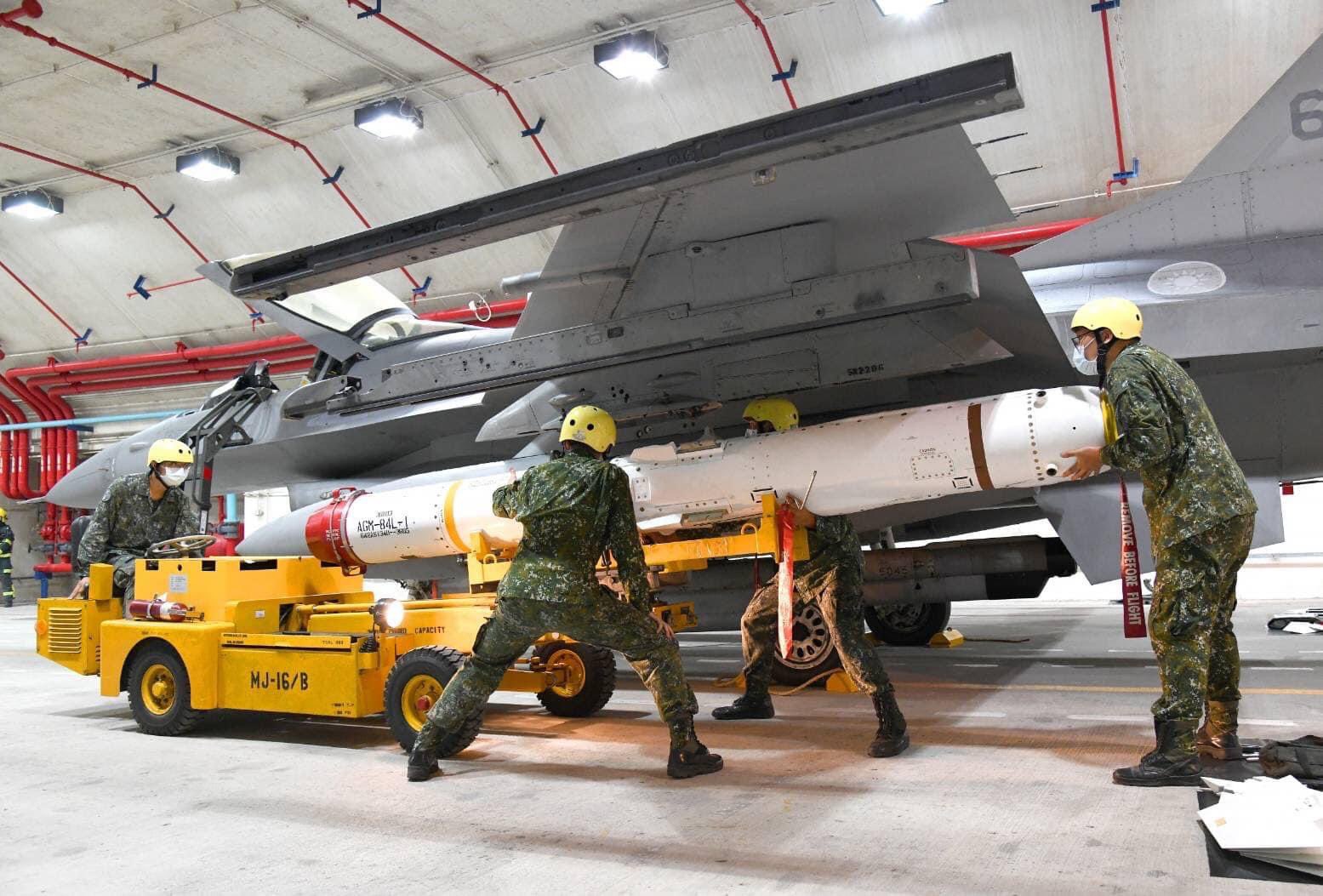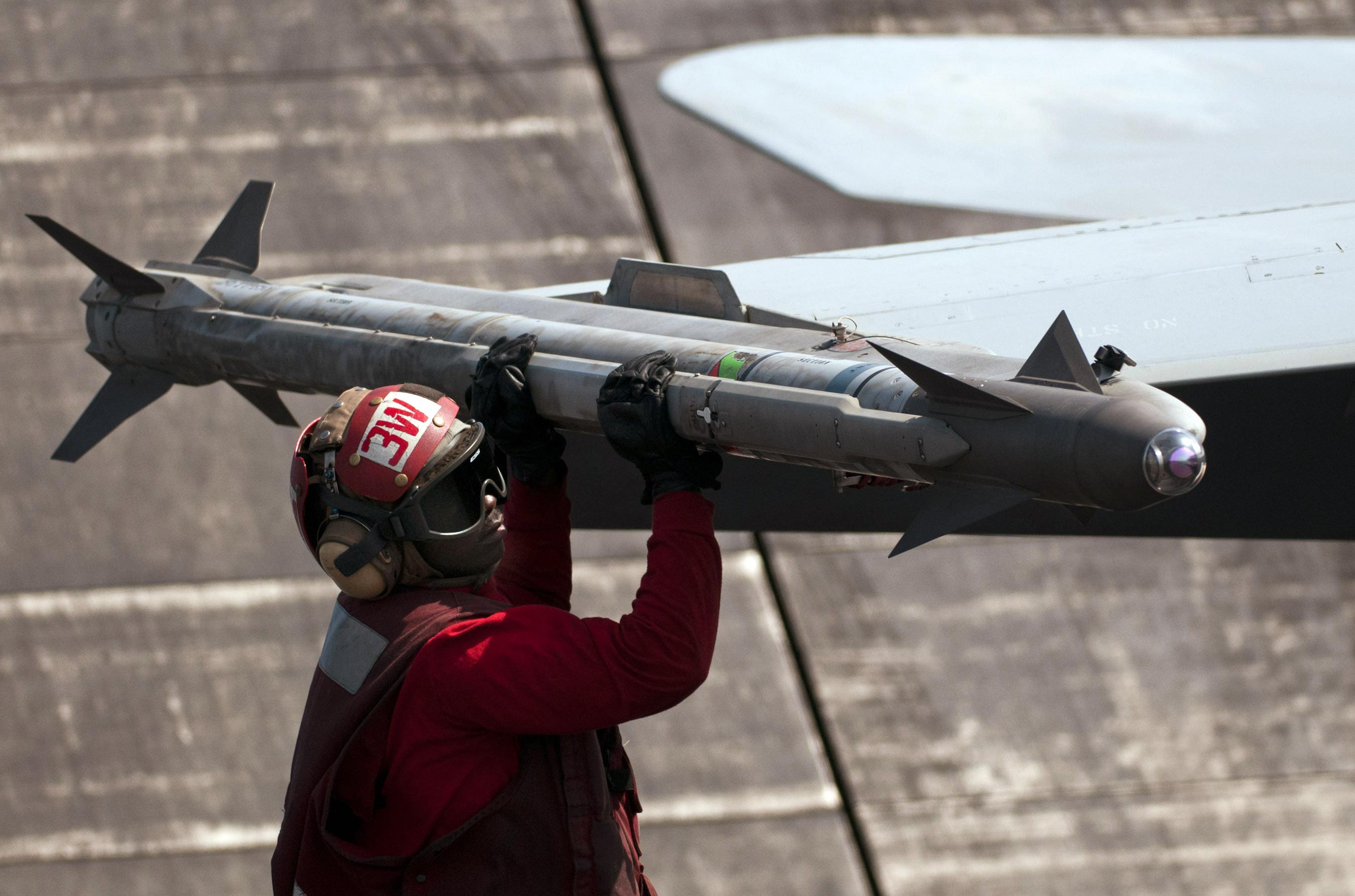Taiwan has equipped its most sophisticated fighter jet, the F-16 Viper, with new air-to-air missiles in what is being seen as a response to People’s Liberation Army (PLA) warplanes routinely flying sorties close to the self-governing island.
Back-To-Back Failure In Hypersonic Testing, US Mulls Moving Away From B-52 Bombers To B1B Lancers
A spokesperson of the Taiwanese air force announced on May 22 that the AIM-9X Sidewinder missiles purchased from the United States have been mounted on its F-16 Viper squadrons, which are called to action in response to PLA fly-bys.
The service stated that the new missiles were shipped to Taiwan from the United States and installed according to schedule. The spokesperson further clarified that every aircraft which is supposed to shadow PLA warplanes had to be armed with a missile by rules governing combat preparedness.
According to reports, all 64 of Taiwan’s F-16Vs of the 4th Tactical Fighter Wing in Chiayi, in the southwest, have been equipped with AIM-9X Block II missiles to increase their tracking and precision-strike capabilities. EurAsian Times could not independently verify this information.
The announcement of equipping F-16 Vipers with the lethal Sidewinder Block II missile come days after Taiwan announced that the delivery of F-16V jets from the US had been postponed owing to some supply chain disruptions caused by the COVID-19 pandemic.
The acquisition of the most advanced variant of the combat-hardened fighter jet aims to bolster Taiwan’s defense capabilities as tensions rise with China.
The PLA routinely carried out incursions into the Taiwanese Air Defense Identification Zone (ADIZ), sometimes even crossing the Median Line. This essentially means that Taiwanese fighters jump into their F-16s virtually every day.
It was reported that Taiwan has been upgrading its 141 F-16A/B aircraft into F-16Vs. To combat PLAAF fighters, particularly the J-16s and J-20 stealth aircraft, the most frequent visitors to the Taiwanese ADIZ, it has purchased 66 new F-16Vs with improved avionics, missiles, and radar systems.
The Taiwanese Air Force will have more than 200 fourth-generation fighter jets when Lockheed Martin delivers the F-16 Vipers to Taiwan, making it the largest F-16 fleet in the Asia Pacific.
However, with the threat of an armed confrontation looming large, the fighter jets must be armed with lethal missiles to take on the enemy warplanes in case of military escalation.
This is where the AIM-9X Block II Sidewinder missiles come into the picture. Interestingly, the Sidewinder missile was used by the US Air Force to shoot down an alleged Chinese spy balloon in February this year. The missile was first used in combat against China during the second Taiwan Strait Crisis in 1958.
US State Department just approved the sale of the following to Taiwan:
-60 Harpoon Block II missiles
-4 Harpoon Block II exercise missiles
-100 AIM-9X Block II Sidewinder tactical missiles
-Contractor Logistics Support for Surveillance Radar Program— WarMonitor?? (@WarMonitor3) September 2, 2022
When Taiwan collaborated with defense contractor Lockheed Martin to upgrade its F-16A/B fighter jets in 2016, it purchased 140 AIM-9X Block II missiles from the US.
More recently, in January this year, a contract worth NT$2.4 billion (US$78.4 million) was also inked by the island’s defense ministry to purchase 100 more AIM-9X missiles from the US, with final delivery anticipated in 2030.
On its part, China considers self-ruled Taiwan a renegade Chinese province and routinely criticizes arms deals between Taiwan and the United States, calling it a violation of China’s sovereignty. However, as China-US relations worsen, Washington has stepped up arms deliveries to the self-ruled island.

The Lethal Sidewinder Air-To-Air Missile
The Sidewinder is the world’s first heat-seeking missile and is the most widely used missile in the West, with at least 27 nations operating it, other than the United States. The AIM-9X Sidewinder is part of the AIM-9 Sidewinder short-range missile family produced by Raytheon.
The AIM-9X Sidewinder has a highly maneuverable airframe with an upgraded infrared counter-countermeasures feature and a high off-boresight focal-plane array seeker placed on it. Many of the AIM-9 M’s original components, including the rocket motor, warhead, and active optical target detector, are included in the AIM-9X, but it performs much better than the original Sidewinder.
The AIM-9X can even be employed against ground targets, unlike earlier AIM-9 variants.
With its datalink, thrust vectoring maneuverability, and improved imaging infrared seeker, the AIM-9X Block II is the most sophisticated short-range air-air missile currently in the US inventory. The AIM-9X has a conventional WDU-17/B blast fragmentation warhead and the Orbital ATK Mk 139 Sidewinder single-thrust propulsion system.
In November 2008, the AIM-9X Block II missile successfully conducted its initial test launch. The missile, also called AIM-9X-2, is an improved model with a lock-on-after-launch function. A new fuse and a unidirectional forward-quarter data link are features of AIM-9X Block II. It can interact with targets even when they are out of sight because of the data link.

What makes the missile a force to reckon with is that it can be used to strike targets behind the fighter that launched it. Moreover, the missile gives the fighter aircrew the first shoot-and-first-kill chance for survival during visual air combat maneuvering. The AIM-9X provides these chances by supporting air superiority in the Beyond Visual Range air-to-air conflict and providing unrivaled offensive and defensive capabilities against threats.
The AIM-9X is a mid-wave Infrared Focal Plane Array (FPA) seeker-equipped system-guided missile. The seeker’s High Off-Boresight (HOBS) allows for a broader assault envelope when used with a helmet-mounted sight. It employs passive infrared (IR) energy to locate and track targets. Following the launch, the seeker follows the heat signature of the enemy aircraft’s engines.
The unnamed source also told SCMP, “If equipped with the Joint Helmet Mounted Cueing System [JHMCS], the strike capability of the AIM-9X missile – which has an infrared heat-seeking guidance system and a high-explosive warhead – will be further boosted.”
The JHMCS provides pilots with “first look, first shot” weapon engagement capabilities, according to the Taiwanese air force. The technology allows the pilot to precisely cue onboard weapons and sensors against hostile aircraft and ground targets and is available in a night variant.
But, the source added only 40 of these systems, each costing about NT$12 million, had been purchased by the island so far for its F-16V squadrons.
- Contact the author at sakshi.tiwari9555(at)gmail.com
- Follow EurAsian Times on Google News




